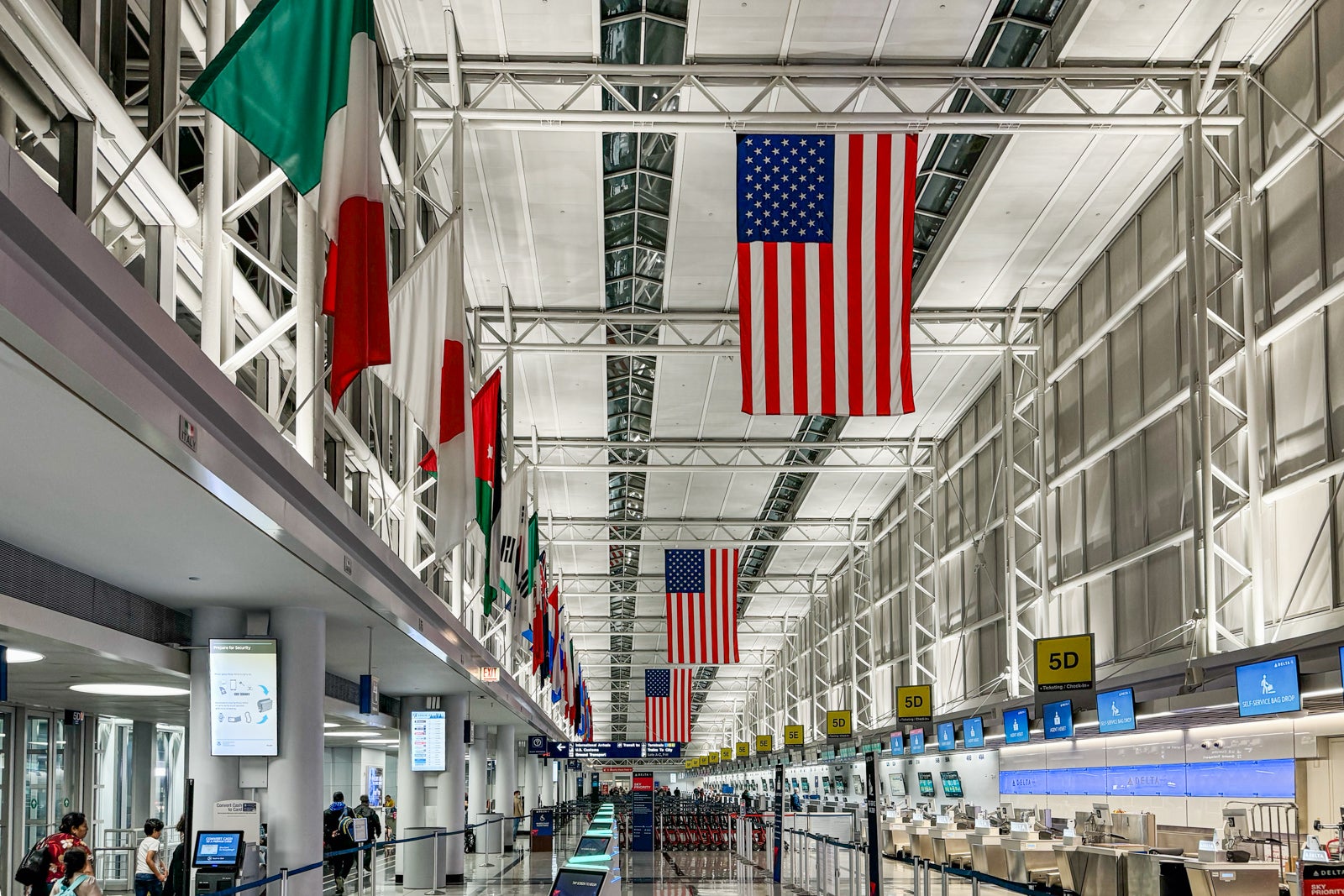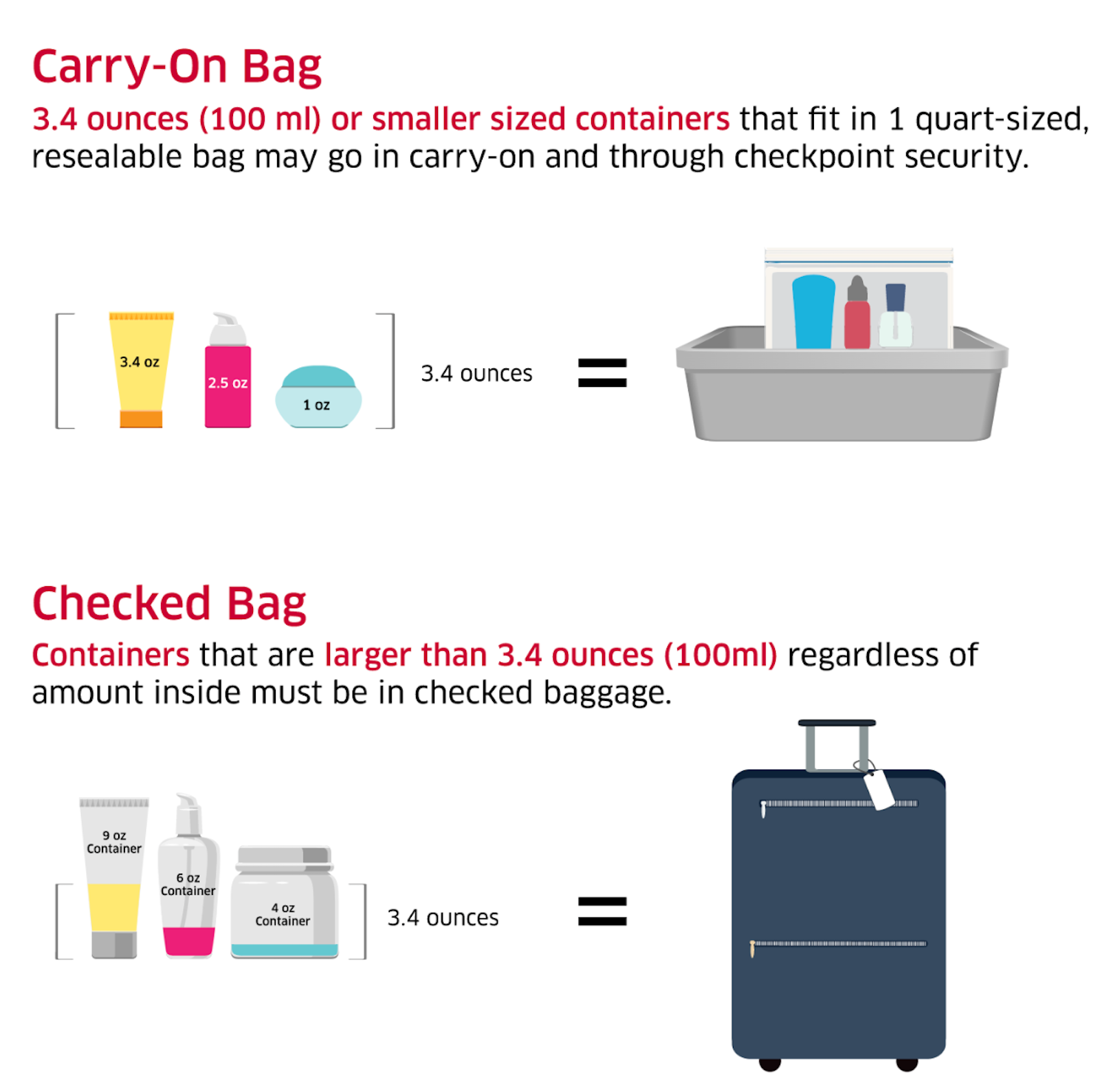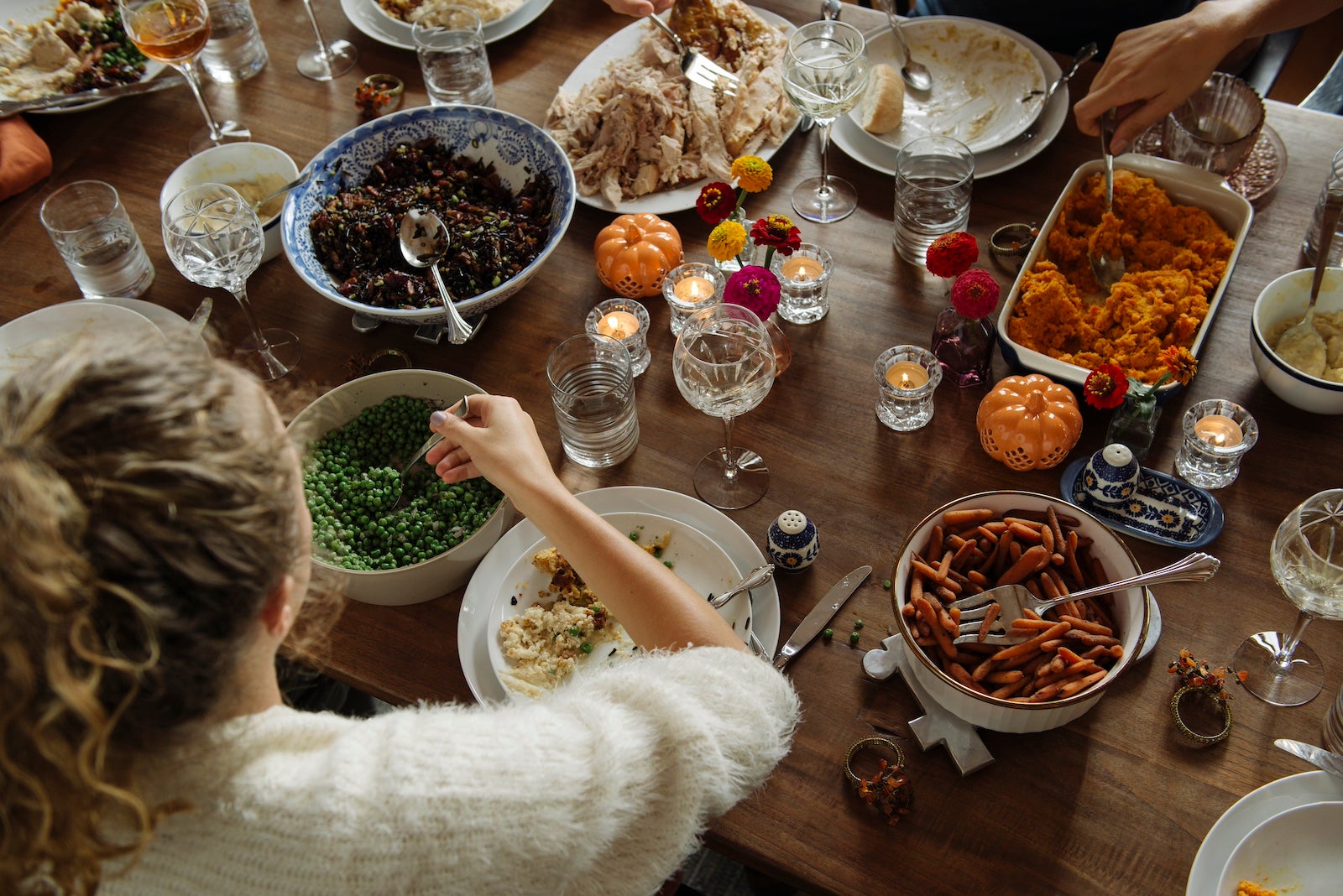We have all been there: You are ready within the Transportation Safety Administration line, solely to listen to brokers name for a “bag examine.”
Oftentimes, it is as a result of a traveler has a liquid product of their carry-on that exceeds the allowed restrict.
The following course of can sluggish issues down — notably when there’s heavy passenger quantity throughout peak journey instances akin to the vacation season.
Brokers usually have to examine the bag, decide what the prohibited merchandise is and permit the traveler to resolve whether or not to discard the merchandise or take it again to their automotive.
However what precisely are the TSA liquid guidelines, and why do they exist? And, most significantly, what does this imply for packing forward of your subsequent journey?
Here is a fast rundown.
TSA liquids guidelines: Why do they exist?
The TSA’s restrictions on liquids date again to 2006 when a thwarted terrorism plot abroad prompted the company to restrict portions of liquids, gels and aerosols in carry-on baggage.
Scores of different nations around the globe took comparable steps within the identify of aviation safety. You may discover comparable guidelines as you journey internationally — although the U.Ok. is shifting towards eradicating these restrictions.
What’s the TSA’s 3-1-1 rule?
The TSA’s ban on liquids — or no less than massive portions of them — is ruled by what’s referred to as the “3-1-1 rule.”

Every day E-newsletter
Reward your inbox with the TPG Every day publication
Be a part of over 700,000 readers for breaking information, in-depth guides and unique offers from TPG’s consultants
The decades-old coverage states that:
- Liquids have to be in containers no bigger than 3.4 ounces, or roughly 100 milliliters (that is the “3”).
- All containers have to be positioned in a single clear, quart-size plastic bag (“1”).
- Every passenger is simply allowed one such plastic bag (“1”).
These guidelines govern liquids, gels and aerosol merchandise starting from toothpaste to shampoo, conditioner, mouthwash and sunscreen — amongst different merchandise.
Liquid merchandise bigger than 3.4 ounces have to be positioned in a checked bag. That applies even to these massive shampoo containers with only a tiny little bit of shampoo left, per TSA coverage.
Exceptions to the TSA’s 3-1-1 coverage
There are just a few exceptions, although.
The TSA will permit you to deliver “medically essential” liquids, gels and aerosols “in cheap portions” to your flight. Nonetheless, you could declare these gadgets to safety officers on the checkpoint for inspection.
The company asks vacationers with bigger quantities of medically essential liquids to take away them from the carry-on bag and place them in a bin or bowl. The TSA has a wide range of different screening strategies it could possibly use.
What are you able to deliver via a TSA checkpoint?
You may deliver creamy cheeses, liquid chocolate, liquid espresso, creamy dips and spreads, gravy, honey, hummus, ice cream, jam, jelly, juice, syrup, peanut butter, salad dressing, sauce, salsa, soda, soup and yogurt so long as they’re in a container of lower than 3.4 ounces, in accordance with the TSA.
You may deliver your water bottle with you — so long as it is empty. This will also be an effective way to economize on the airport, since many now have post-security filling stations for reusable water bottles.
When doubtful, seek the advice of the TSA’s record of what you possibly can carry via the airport and examine along with your airline.
Or, higher but, obtain the MyTSA app. It incorporates a “Can I Carry?” part, permitting you to search for gadgets and discover out whether or not they’re allowed outright, restricted to three.4 ounces, permitted solely in a checked bag, permitted solely in a carry-on bag or prohibited altogether.
What about Thanksgiving meals?
The three-1-1 guidelines will probably be notably essential to recollect because the TSA prepares to display some 18.3 million folks throughout this Thanksgiving week — with Sunday, Dec. 1, shaping as much as be maybe the busiest day ever at U.S. airports.
It is a protected guess a big portion of these passengers will probably be flying with Thanksgiving desk staples — or leftovers — a few of which blur the traces between “liquid” and “strong.”
The TSA’s rule of thumb: “Should you can spill it, unfold it, spray it, pump it or pour it, and it is bigger than 3.4 ounces, then it ought to go in a checked bag.”
Particularly, the TSA says turkey, stuffing, casseroles and mac and cheese needs to be protected to hold on — together with pies, desserts, cookies and brownies.
The TSA notes some meals gadgets might have further screening, even when they do adjust to 3-1-1 guidelines, so make sure to pack elements of your Thanksgiving meal in simply accessible areas in your carry-on bag.
Then again, cranberry sauce, gravy, canned fruits and canned greens are a “no-go” to your carry-on; you may wish to examine these gadgets (until they’re frozen strong).
Associated studying:




